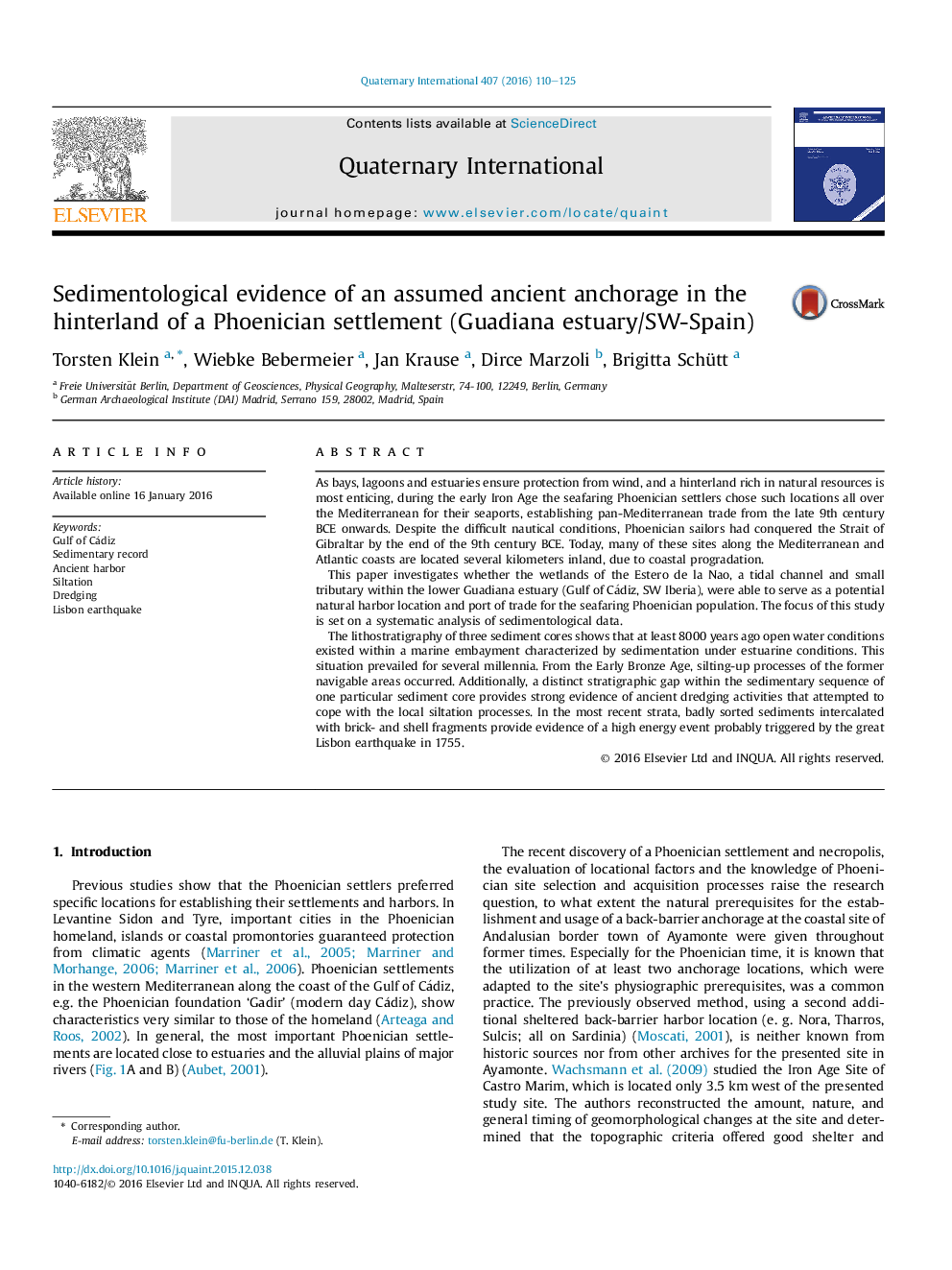| کد مقاله | کد نشریه | سال انتشار | مقاله انگلیسی | نسخه تمام متن |
|---|---|---|---|---|
| 1040045 | 944450 | 2016 | 16 صفحه PDF | دانلود رایگان |
As bays, lagoons and estuaries ensure protection from wind, and a hinterland rich in natural resources is most enticing, during the early Iron Age the seafaring Phoenician settlers chose such locations all over the Mediterranean for their seaports, establishing pan-Mediterranean trade from the late 9th century BCE onwards. Despite the difficult nautical conditions, Phoenician sailors had conquered the Strait of Gibraltar by the end of the 9th century BCE. Today, many of these sites along the Mediterranean and Atlantic coasts are located several kilometers inland, due to coastal progradation.This paper investigates whether the wetlands of the Estero de la Nao, a tidal channel and small tributary within the lower Guadiana estuary (Gulf of Cádiz, SW Iberia), were able to serve as a potential natural harbor location and port of trade for the seafaring Phoenician population. The focus of this study is set on a systematic analysis of sedimentological data.The lithostratigraphy of three sediment cores shows that at least 8000 years ago open water conditions existed within a marine embayment characterized by sedimentation under estuarine conditions. This situation prevailed for several millennia. From the Early Bronze Age, silting-up processes of the former navigable areas occurred. Additionally, a distinct stratigraphic gap within the sedimentary sequence of one particular sediment core provides strong evidence of ancient dredging activities that attempted to cope with the local siltation processes. In the most recent strata, badly sorted sediments intercalated with brick- and shell fragments provide evidence of a high energy event probably triggered by the great Lisbon earthquake in 1755.
Journal: Quaternary International - Volume 407, Part A, 2 July 2016, Pages 110–125
